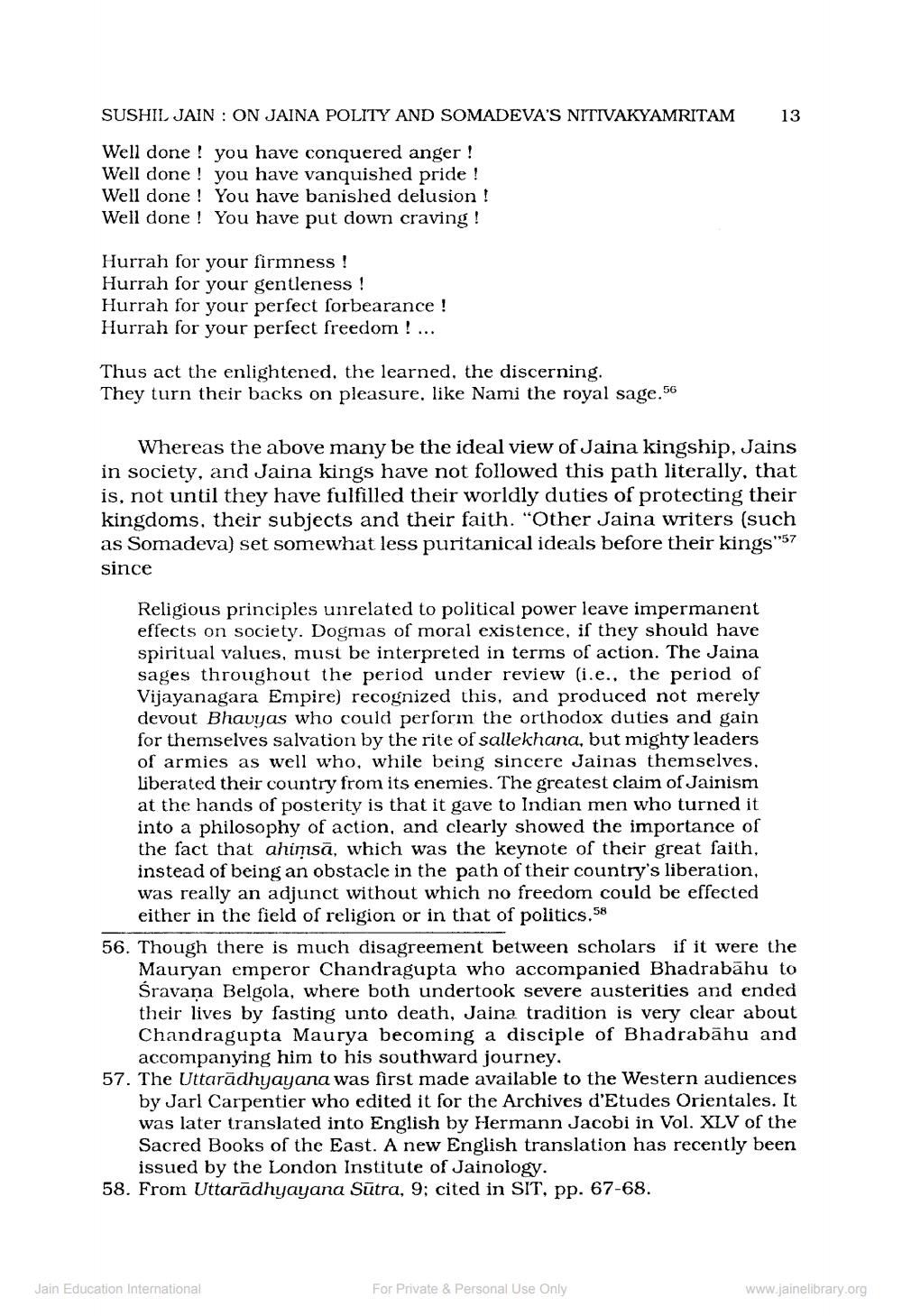________________
SUSHIL JAIN : ON JAINA POLITY AND SOMADEVA'S NITIVAKYAMRITAM
13
Well done! you have conquered anger ! Well done! you have vanquished pride! Well done! You have banished delusion ! Well done! You have put down craving !
Hurrah for your firmness ! Hurrah for your gentleness ! Hurrah for your perfect forbearance ! Hurrah for your perfect freedom ! ...
Thus act the enlightened, the learned, the discerning. They turn their backs on pleasure, like Nami the royal sage. 56
Whereas the above many be the ideal view of Jaina kingship, Jains in society, and Jaina kings have not followed this path literally, that is, not until they have fulfilled their worldly duties of protecting their kingdoms, their subjects and their faith. "Other Jaina writers (such as Somadeva) set somewhat less puritanical ideals before their kings"57 since
Religious principles unrelated to political power leave impermanent effects on society. Dogmas of moral existence, if they should have spiritual values, must be interpreted in terms of action. The Jaina sages throughout the period under review (i.e., the period of Vijayanagara Empire) recognized this, and produced not merely devout Bhavyas who could perform the orthodox duties and gain for themselves salvation by the rite of sallekhana, but mighty leaders of armies as well who, while being sincere Jainas themselves, liberated their country from its enemies. The greatest claim of Jainism at the hands of posterity is that it gave to Indian men who turned it into a philosophy of action, and clearly showed the importance of the fact that ahimsā, which was the keynote of their great faith, instead of being an obstacle in the path of their country's liberation, was really an adjunct without which no freedom could be effected
either in the field of religion or in that of politics.58 56. Though there is much disagreement between scholars if it were the
Mauryan emperor Chandragupta who accompanied Bhadrabahu to Śravana Belgola, where both undertook severe austerities and ended their lives by fasting unto death, Jaina tradition is very clear about Chandragupta Maurya becoming a disciple of Bhadrabāhu and
accompanying him to his southward journey. 57. The Uttaradhyayana was first made available to the Western audiences
by Jarl Carpentier who edited it for the Archives d'Etudes Orientales. It was later translated into English by Hermann Jacobi in Vol. XLV of the Sacred Books of the East. A new English translation has recently been
issued by the London Institute of Jainology. 58. From Uttaradhyayana Sūtra, 9; cited in SIT, pp. 67-68.
Jain Education International
For Private & Personal Use Only
www.jainelibrary.org




